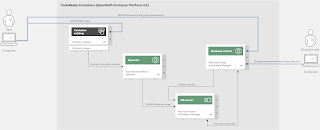This article is a sort of 'cheat sheet' for developers on the most useful features of C# 9 and several functions from previous versions. With each new version of C#, its developers strive to make the programming process more convenient and concise. This time around, most of the attention was paid to changes in object properties, the new Record type, and more, but first things first.
C# is a programming language that Microsoft created for their own projects. Its syntactic capabilities have something in common with Java and C++. In 2000, the company's engineers developed the ASP.NET active server page technology, which allowed databases to be tied to web applications. ASP.NET itself was written in C#. The ability to build flexible and scalable applications in the future is one of the nice advantages of C#. Products can also be very different — from games to web services.




